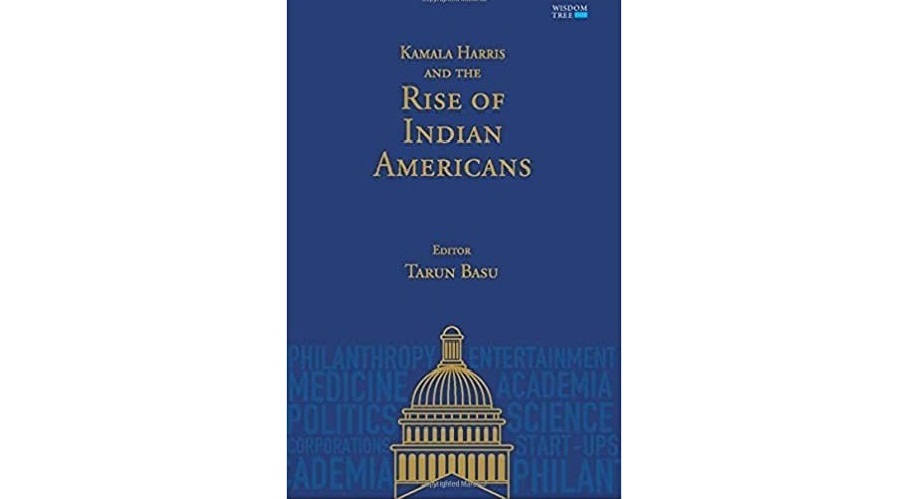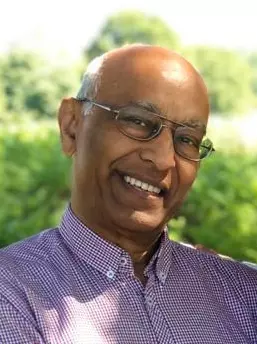Provides fresh and fascinating insights that can be inspirational and valuable for a wide range of audience
“Kamala Harris and the Rise of Indian Americans,” edited by Tarun Basu, is an evocative collection of essays which try to capture the rise of Indian Americans across a wide range of domains from politics to administration, entrepreneurship to technology, medicine to hospitality, science to academia, business to entertainment, philanthropy to social activism.
The major USP of the book is that most of the writers who have written the chapters are leaders and achievers themselves and have unique understanding of Indian Diaspora.
The writers include most articulate Indian Member of Parliament Shashi Tharoor, the most respected voice of Indian Diaspora M R Rangaswami, eminent scholars like Dr. Pradeep K Khosla, Maina Chawla Singh, Sujata Warrier, Shamia Das Dasgupta, leading Indian Diplomats like Arun K Singh & T P Sreenivasan, corporate leaders like Raj L Gupta & Deepak Raj, industry observers like Ajay Ghosh, Vikrum Mathur and Bijal Patel and prolific journalists like Aziz Haniffa, Arun Kumar, Mayank Chayya, Suman Guha Mazumdar & Laxmi Parthasarthy.
The title of the book “Kamala Harris and The Rise of Indian Americans” seems very apt and thought provoking in the current context as the election of Kamala Harris as Vice President of the United States is a golden moment for Indian Americans.
The story of Kamala Harris is an inspiring story of how an immigrant population from a developing country became the most educated and highest-earning ethnic community.
Though the book is not as well researched as the book titled “The Other One Per Cent: Indians in America” by Professor Devesh Kapur, Prof Sanjoy Chakravorty and Nirvikar Singh, it is still worth reading.
Some of the essays provide fresh and fascinating insights and stories which can be inspirational and valuable for a wide range of audiences like scholars, students, entrepreneurs and innovators.
Read: Book Review: Ex-Indian spy chief’s road map for post-Trump era (November 16, 2020)
According to the editor, the book tries to do a balancing act by neither trying to document community’s saga nor create a compendium glorifying the community.
He does succeed to some extent in doing so, but not completely. There are parts of the book which become boring and long because of too much emphasis on Kamala Harris and glorification of the community.
Tarun Basu’s interesting chapter explores how the Indian-American community came to become involved in American politics. He tries to separate first generation Indian Americans from the second and third generation Indian Americans.
M R Rangaswami shares his personal experiences and very nicely portrays how the Indian Americans made their mark in the Silicon Valley.
TP Sreenivasan portrays the US India relations and how Indian American community played a paramount role in facilitating India’s Interest particularly at the time of nuclear deal.
Raj L Gupta tries to list six cultural differentiators which have given Indian Diaspora a comparative edge. Deepak Raj and Ashish Shah argue in their chapter that Indian Americans donate less than the Average American. They explore the Indian American Community’s “giving gap”.
Aziz Haniffa had interviewed Kamala Harris in 2009 for India Abroad and he nicely describes his experiences and perceptions about her. He finds her a trailblazer who would motivate the future generations.
Bijal Patel explains the history of Indian Americans in the hospitality business. One of the major highlights of the book is the chapter by Shashi Tharoor who in his wonderful style explores how Kamala Harris’s success evidences the ways in which Indian diaspora continually contributes to and bolsters India’s reputation. According to him, they have improved India’s image globally.
Mayank Chayya’s chapter explores the research contribution of Indian Americans in the field of Science & Technology. He beautifully highlights the honors of three Indian American winners of the Nobel Prize:Dr. Subrahmanyam Chandrashekhar, Dr. Har Gobind Khorana and Dr. Venkatraman Ramakrishnan.
Vikrum Mathur talks about the role in Indian American’s have played in the entertainment industry.
Arun Kumar’s chapter is well written and explores the influence of Indian Americans in political realm, particularly the government jobs. He highlights the successful individual in this arena.
Ajay Ghosh explores the contributions made by Indian- Americans in medical field. He describes how AAPI (American Association of Physicians of Indian Origin) helped Indians combat discrimination and bolster their status.
Laxmi Parthasarthy explores the accomplishments of female Indian-American millennial.
Read: Book Review: ‘Every Sparrow Was Made to Fly’ (February 16, 2019)
My favorite chapter is the one written by Prof Pradeep Khosla and Suman Guha Mazumdar. It talks about the rise to prominence of Indian Americans in academia as not only professors but as administrators and leaders. They have become change makers in the temples of learning.
The chapter by Sujata Warrior and Shamita Dasgupta challenges mainstream Diasporic notions of success. They find that the conventional markers of success in Indian-American community exclude the work of activists working to empower marginalized communities.
The epilogue written by Dr. Arun K Singh gives a nice summary of the previous chapters and emphasizes the growth of the community into a social and political force.
One of the key highlights of the book is that it acknowledges the role played by organizations like Indiaspora, GOPIO, USINPAC, TiE, The Rockefeller Foundation, IMPACT, USIBC, USISPF & PANIIT(Alumni of Indian Institute of Technology) in some of places.
It also highlights the contribution of people like Shekar Narasimhan, Dr. Mahendra Tak, Priyamvada Natarajan, C K Prahalad, Dipak Jain, Dr. Navin Shah, Ron Somers, Tulsi Gabbard, Satya Nadella, Sundar Pichai, Indra Nooyi, Ajay Banga & Gopal Raju in various places.
The book also carries wonderful quotes from leaders of Indian Diaspora. Overall, “Kamala Harris and The Rise of Indian Americans” is a brave attempt to capture the rise of Indian Americans.
Hopefully, the book may inspire or encourage other writers to write books on specific themes which are covered in the book and also write on themes which have been not been given as much importance in the book like Culture & Law.
It might now be interesting if there can be a compendium on Indian Diaspora as it is going to be the 75th anniversary of Indian Independence.
This book can also inspire authors to write a serious book on South Asian community in the US in times to come. The book might also inspire Indian Americans to contribute more towards philanthropy & also help in building up already strong US India ties.
(Rajesh Mehta is a leading consultant & columnist working on Market Entry, Innovation & Public Policy.)


